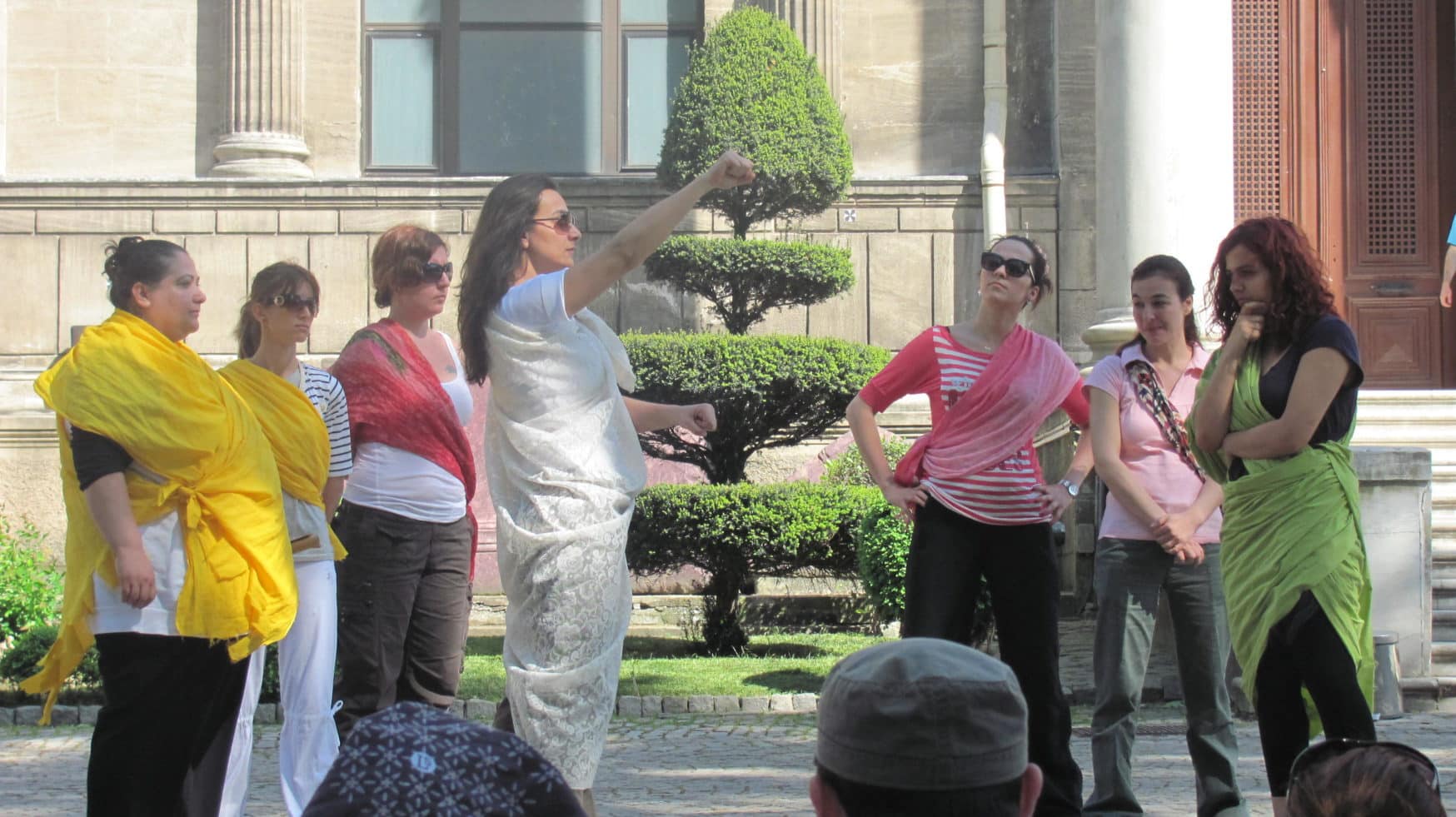Imagine. A facilitator asks a team to simulate a strategy meeting. One of the participants takes on the role of playing a skeptical end user of their products. Everyone is encouraged to improvise, sharing their perspectives, ideas, and feedback on how the end user’s concerns are either being addressed or ignored.
How will the scene end? Will the team find a groove and progress towards resolution? Or will their creativity be crushed by the weight of conflict?
This team is experiencing Creative Drama – a powerful experiential learning tool. And they are being led by a skilled facilitator using a combination of role-play, dramatization, and improvisation techniques.
Reassuringly, the facilitator encourages the team to keep going. And here’s what’s possible for the team should they choose to persevere.
Accessing Participant Perspectives
Creative drama opens up direct and indirect access to hidden layers of insight from the participants. The deeper they go into the scene, the richer the perspectives will be. The facilitator leverages the twists and turns of the simulation to draw out richly textured experiences, ideas, and feelings. Practical examples might be using a “musical chairs” style exercise to spark discussion about competitive aspects of the market, or asking participants to “act out” the functionality of new software apps to help gauge a reaction to technological changes.
Simulating Real Experiences
Simulation. Improvisation. Using your body and imagination to respond instinctively. Feeling your way through it rather knowing your way through it. In creative drama, the facilitator encourages ‘play’ to support experimentation and risk-taking – failure is encouraged. Participants act their way into a new way of thinking rather than the other way around.
Accelerating Creativity
Brainstorming. Ideation. Creative drama invites participants to bring ideas to life. For example, participants write and perform customer-focused “love” songs and then harvest ideas for a new loyalty program. Or teams might prepare press releases written for kindergarten students as a way to pinpoint how they need to communicate with less jargon. The facilitator knows that activities like these encourage even the most hesitant to join-in, and they accelerate the creative process, leading to more abstract forms of thinking.
Seeking Common Ground
Diverse perspectives. Opposing viewpoints. Competing needs. Conflicting values. Creative drama exposes controversy. The facilitator welcomes the discomfort created by constraints, tension, and a range of physical and emotional stressors. Empathy is essential. Always, there is progress towards shared understanding, clarifying needs and expectations, and seeking common ground.

A facilitator leading creative drama knows that it is much more than theatre or playing games. And they also understand that using this tool in a corporate setting requires thoughtful preparation.
Here are a few keys to using creative drama tools effectively:
Be clear about outcomes. Activities can be used to generate new ideas, teach a concept, define a problem, or analyze the root cause of an issue.
Know your audience. Prepare the participants for an unorthodox approach. Balance the level of safety and risk, especially with a more conventional group.
Be prepared to switch gears. If your group is overly resistant and you start to lose them, you need to be able to adjust on the fly. The same is true if they get bored because it’s not challenging enough.
Provide clear instructions. Guide and support your groups so they can be confident rather than confused. Always demonstrate what you’re asking them to do. Be precise with your direction.
Share specific feedback. It’s your responsibility to listen and observe during an exercise or activity. Meaningful examples and observations will engage participants in richer reflection.
Summarize results and outcomes. Connect the dots. Make real-world application tangible. Link the exercise to valuable outcomes and next steps.
Used strategically, creative drama is engaging, challenging… and even fun!
For the adventurous facilitator, inspiration abounds – building on a fact, a historical event, a current news story, a memoir, photography – all can be used in an activity that relates to the desired outcome.
And for the wise facilitator, caution informs – offering a stretch experience that creates discomfort but provides a safe environment and avoids panic – even with a skeptical end user in the room!
Curious to learn more about Sukran and her work… Find her on LinkedIn.


